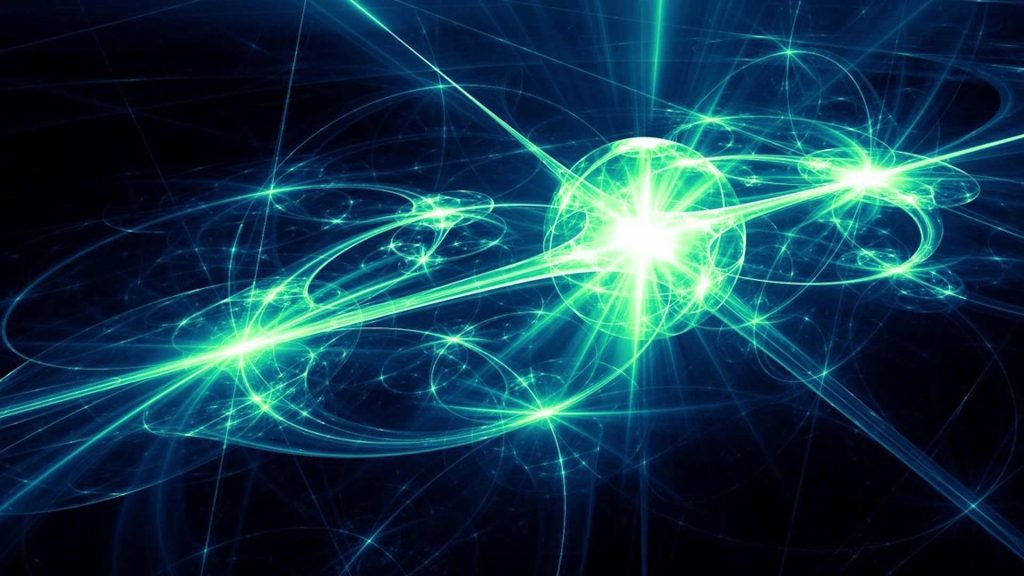

أوضحت الدراسة أن الشحنة الفسيفسائية هي نتيجة مباشرة لتخطيط البيئة والتنمية المستدامة.
كانت كهربة الاتصال (CE) هي المصدر الأول والوحيد للبشرية للكهرباء حتى القرن الثامن عشر تقريبًا ، لكن طبيعتها الحقيقية لا تزال لغزًا. اليوم ، يُنظر إليه على أنه عنصر حاسم في التقنيات مثل طابعات الليزر ، وعمليات إنتاج شاشات الكريستال السائل ، والطلاء الكهروستاتيكي ، وفصل البلاستيك لإعادة التدوير ، وأكثر من ذلك ، فضلاً عن كونه خطرًا صناعيًا كبيرًا (تلف الأنظمة الإلكترونية ، والانفجارات في مناجم الفحم ، والحرائق. في المصانع الكيماوية) بسبب التصريفات الكهروستاتيكية (ESD) التي تصاحب CE. نشرت دراسة عام 2008 في طبيعة سجية وجدت أنه في الفراغ ، تكون ESDs لشريط لاصق بسيط قوية جدًا بحيث تولد ما يكفي من الأشعة السينية لالتقاط صورة بالأشعة السينية للإصبع.
لفترة طويلة ، كان يعتقد أن اثنين من المواد الملامسة / المنزلقة تشحن في اتجاهات متعارضة وموحدة. ومع ذلك ، بعد CE ، تم اكتشاف أن كل من الأسطح المنفصلة تحمل كلاً من الشحنات (+) و (-). يُعزى تشكيل ما يسمى بفسيفساء الشحنة إلى تجربة عدم القدرة على الإنتاج ، أو عدم التجانس المتأصل في المواد الملامسة ، أو “الطبيعة العشوائية” العامة لـ CE.
فريق بحث ، بقيادة البروفيسور بارتوش أ. Grzybowski (قسم الكيمياء) من مركز المواد اللينة والمعيشية ، داخل معهد العلوم الأساسية (IBS) في معهد أولسان الوطني للعلوم والتكنولوجيا (UNIST) قام بالتحقيق في المصادر المحتملة لشحن الفسيفساء لأكثر من عقد. ومن المتوقع أن تساعد الدراسة في السيطرة على التصريفات الكهروستاتيكية التي قد تكون ضارة وقد تم نشرها مؤخرًا في المجلة

Figure 1. Charge mosaics on contact-charged dielectrics. (a) In a conventional view, two electrically neutral materials (grey) are brought into contact and then separated charge uniformly (lower left), one positive (red) and one negative (blue). In an alternative scenario (lower right), each surface develops a highly non-uniform ‘charge mosaic’ with neighboring domains of opposite charge polarities. (b) Collage of charge mosaics reported in the literature (the years and scale bars are indicated). Credit: UNIST
In the paper published recently in Nature Physics, the group of Professor Grzybowski shows that charge mosaics are a direct consequence of ESD. The experiments demonstrate that between delaminating materials the sequences of “sparks” are created and they are responsible for forming the (+/-) charge distributions that are symmetrical on both materials.
“You might think that a discharge can only bring charges to zero, but it actually can locally invert them. It is connected with the fact that it is much easier to ignite the ‘spark’ than to extinguish it,” says Dr. Yaroslav Sobolev, the lead author of the paper. “Even when the charges are reduced to zero, the spark keeps going powered by the field of adjacent regions untouched by this spark.”
The proposed theory explains why charge mosaics were seen on many different materials, including sheets of paper, rubbing balloons, steel balls rolling on Teflon surfaces, or polymers detached from the same or other polymers. It also hints at the origin of the crackling noise when you peel off a sticky tape – it might be a manifestation of the plasma discharges plucking the tape like a guitar string. Presented research should help control the potentially harmful electrostatic discharges and bring us closer to a true understanding of the nature of contact electrification, noted the research team.
References: “Charge mosaics on contact-electrified dielectrics result from polarity-inverting discharges” by Yaroslav I. Sobolev, Witold Adamkiewicz, Marta Siek and Bartosz A. Grzybowski, 8 September 2022, Nature Physics.
DOI: 10.1038/s41567-022-01714-9
“Correlation between nanosecond X-ray flashes and stick-slip friction in peeling tape” by Carlos G. Camara, Juan V. Escobar, Jonathan R. Hird and Seth J. Putterman, 23 October 2008, Nature.
DOI: 10.1038/nature07378
“The mosaic of surface charge in contact electrification” by H. T. Baytekin, A. Z. Patashinski, M. Branicki, B. Baytekin, S. Soh and B. A. Grzybowski, 23 June 2011, Science.
DOI: 10.1126/science.1201512

“متعطش للطعام. طالب. متحمس محترف للزومبي. مبشر شغوف بالإنترنت.”






More Stories
صاروخ فالكون 9 التابع لشركة سبيس إكس يتوقف قبل إطلاقه ملياردير في مهمة خاصة
بقرة بحرية ما قبل التاريخ أكلها تمساح وسمكة قرش، بحسب حفريات
إدارة الطيران الفيدرالية تطلب التحقيق في فشل هبوط صاروخ فالكون 9 التابع لشركة سبيس إكس